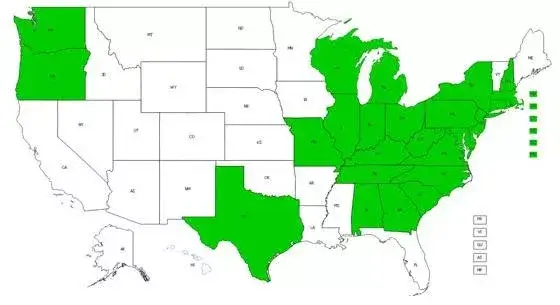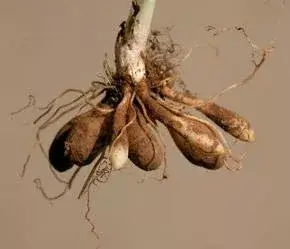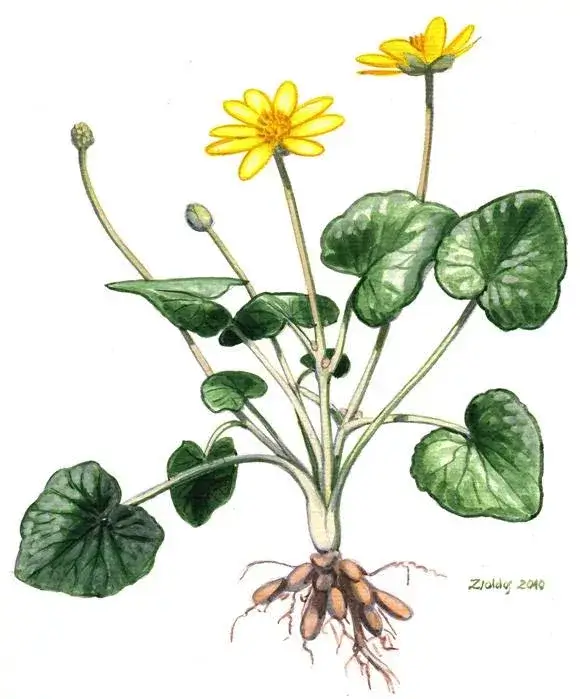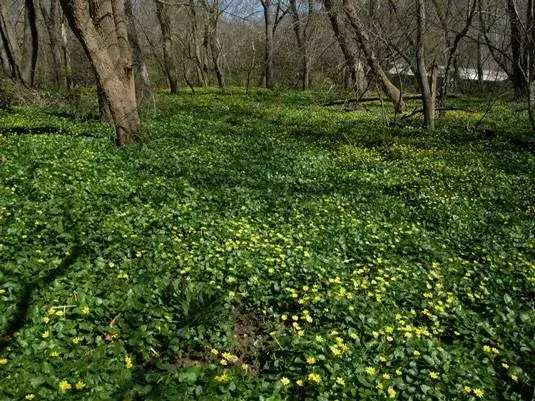
The spring ephemeral lesser celandine (Ficaria verna, previously Ranunculus ficaria L.), also called fig buttercup, is an herbaceous perennial found throughout the northeastern United States. It prefers moist, sandy soil, and thrives along stream and river banks, in open forested flood plains, and in other wetland sites. It will grow in drier habitats, however, and as a garden escape can often be found in urban and semi-urban areas.

Native to Europe, Asia and northern Africa, lesser celandine was likely introduced as an ornamental plant. The earliest herbarium specimen dates to 1867 from Pennsylvania. Lesser celandine has been reported throughout the northeastern United States and west to Missouri, and in the Pacific Northwest.

Lesser celandine is low growing and mat-forming, with long stalked leaved densely arranged in a basal rosette. Mature rosettes can reach up to 30 cm (12 in) diameter and up to 30 cm (12 in) tall. The kidney shaped leaves are 4 to 9 cm (1.6 to 3.5 in) wide, smooth, and have wavy edges. Leaf stalks (petioles) are deeply grooved and U-shaped in cross section. Flowers are yellow, 2 to 6 cm (0.8 to 2.4 in) wide and have long (10 to 30 cm; 4 to 12 in) peduncles. There are five sub-species of lesser celandine, distinguished largely by reproductive characters. Ornamental varieties may have a range of flower colors.




Lesser celandine is ephemeral (short-lived), and its emergence is triggered by increased light availability in the early spring. Shoots emerge from late-March to mid-April depending on environmental conditions, and flowering, which may be linked to water availability, occurs from late April to mid-May. Some sub-species produce pale aerial bulbils in the leaf axils. Seed production occurs in late spring, and by summer the above ground vegetation dies back and the plant becomes dormant. Seeds do not mature on the plant; rather, they require an after-ripening period to fully mature. Some varieties do not produce many viable seeds, and the aerial bulbils and tuberous roots are the primary mode of reproduction. Bulbils are dispersed through animal and environmental disturbance, and can be carried along waterways.


Lesser celandine emerges earlier than most native plants, and may inhibit the development and reproduction of other spring ephemerals, particularly smaller species like spring beauties (Claytonia spp.), trilliums (Trillium spp.), and bloodroot (Sanguinaria canadensis). These native wildflowers are a source of nectar for bees and other insects in the early spring. The bare ground left behind after lesser celandine senesces in late spring may be colonized by other weedy species.


Due to its ephemeral nature and capacity for vegetative reproduction, lesser celandine can be challenging to effectively control. Small infestations can be removed manually, though care must be taken to completely remove the tubers from the soil. Repeated, early season mowing may reduce or stay growth of lesser celandine, but risks dispersing aerial bulbils. Glyphosate based herbicides may also be effective, and will require far less soil disturbance than manual removal. A 1.5% concentration of a 39% to 41% glyphosate isopropyl-amine salt solution with a non-ionic surfactant is effective for spot applications. Herbicide is most effective when applied early in the season and, when possible, applications should be made before any non-target plants have emerged. Note: Always check state/provincial and local regulations for the most up-to-date information regarding permits for control methods. Follow all label instructions. Mention of chemicals in this profile does not represent a recommendation by NY Sea Grant or Cornell University.
This map shows confirmed observations (green points) submitted to the NYS Invasive Species Database. Absence of data does not necessarily mean absence of the species at that site, but that it has not been reported there. For more information, please visit iMapInvasives.
Swearingen, J., K. Reshetiloff, B. Slattery, and S. Zwicker. 2002. Plant Invaders of Mid-Atlantic Natural Areas. https://www.invasive.org/browse/subinfo.cfm?sub=3069 Accessed: January 14, 2010.
